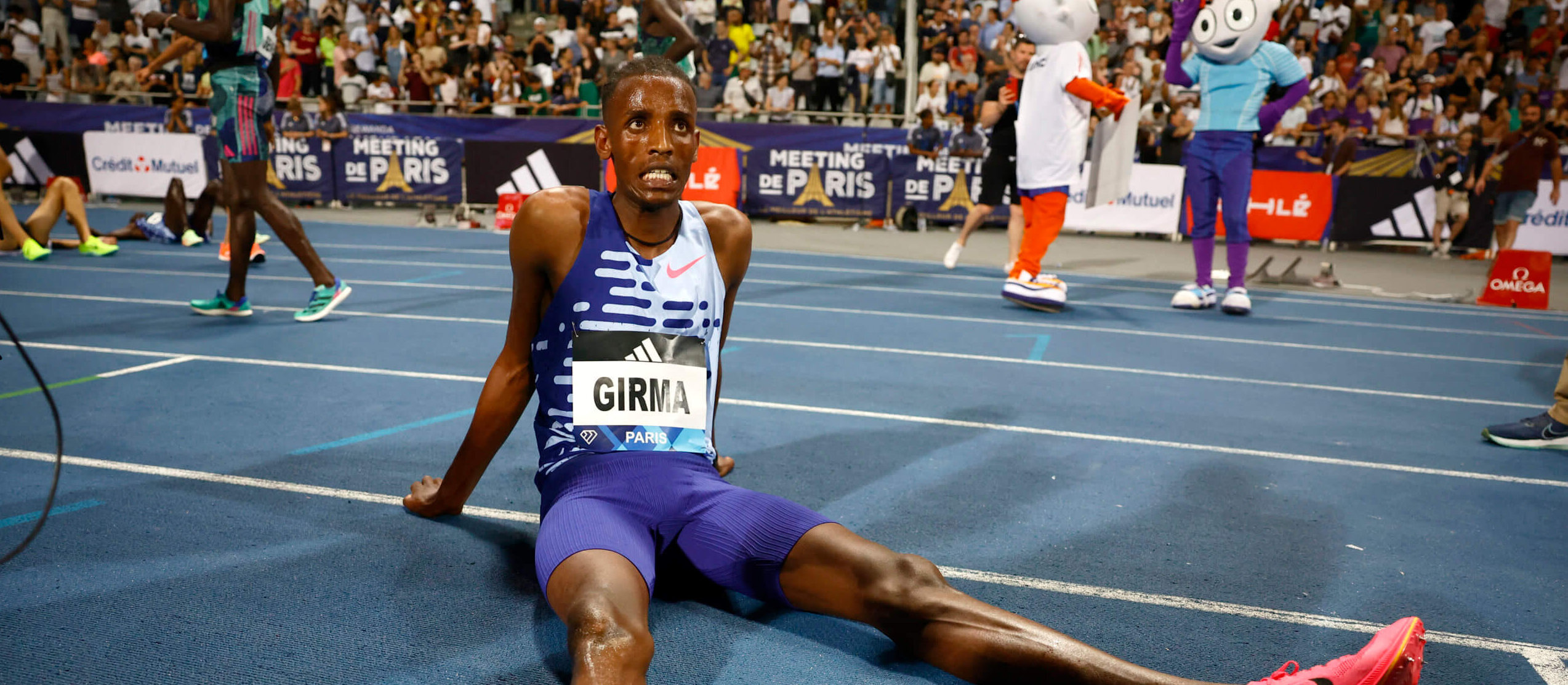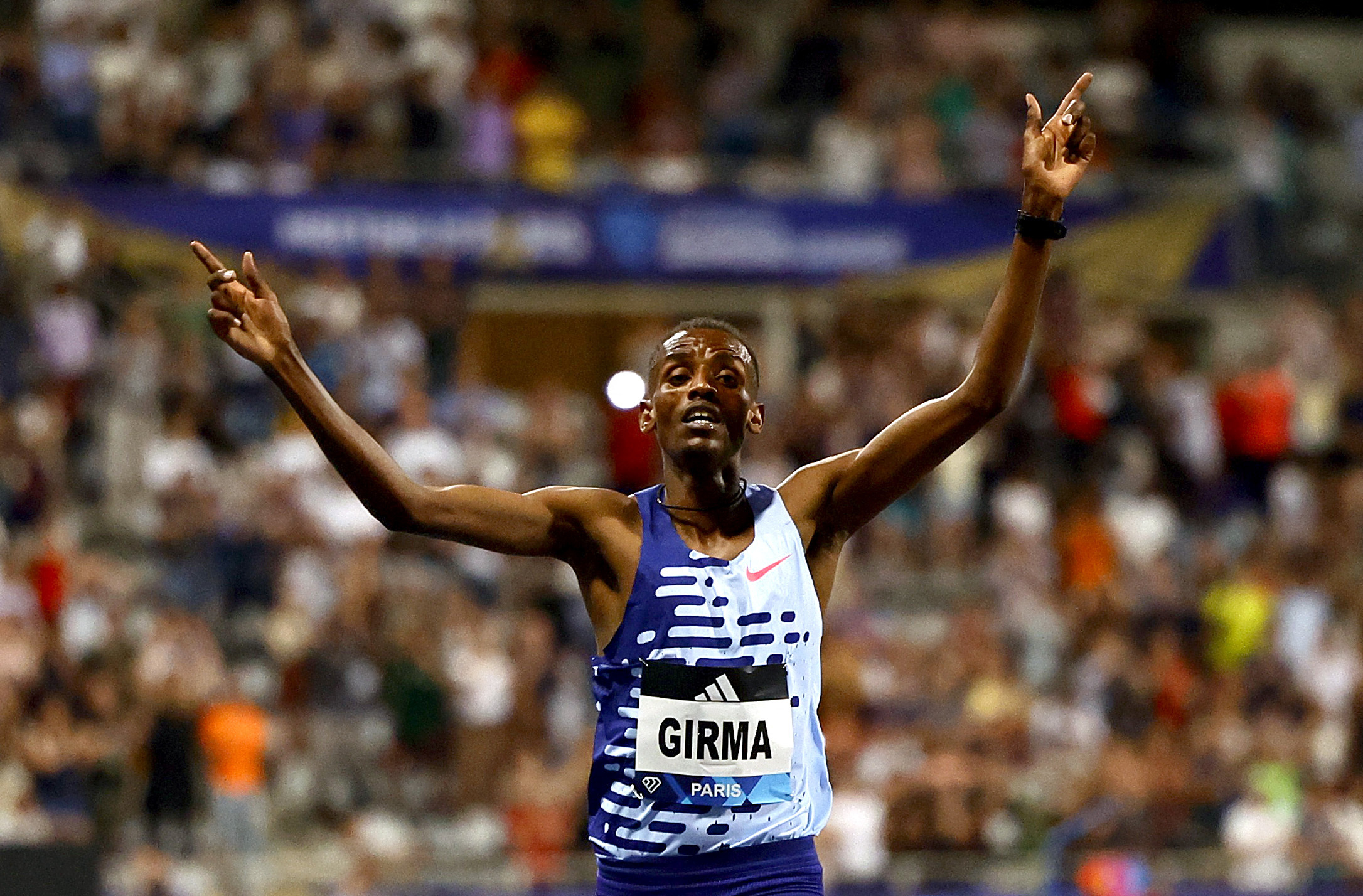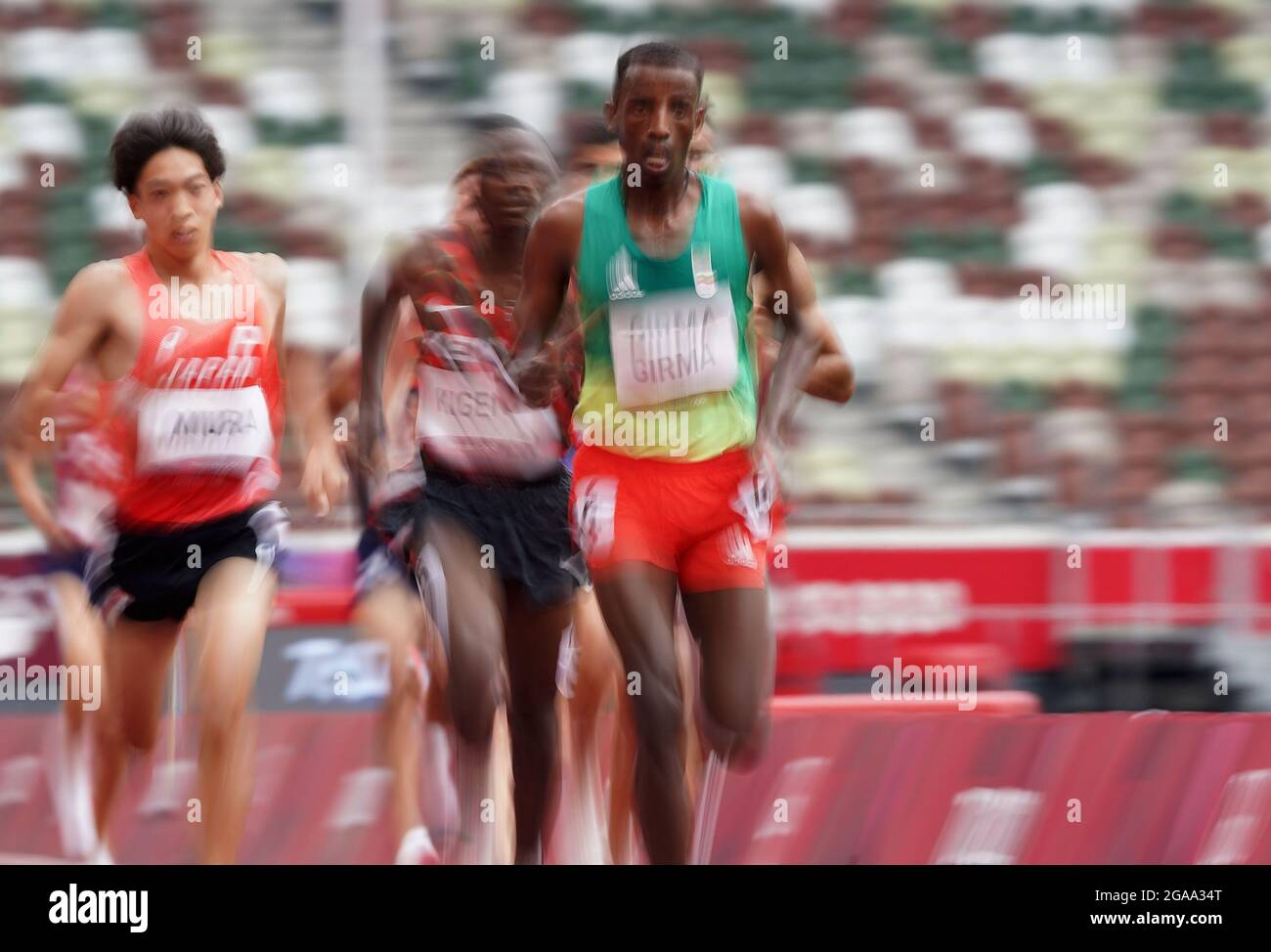The Girma Steeplechase: Girma Steeplechase Fall

The Girma Steeplechase is a renowned and challenging race that has captivated athletes and spectators alike for decades. Its origins can be traced back to the early days of the sport, with a rich history intertwined with the evolution of steeplechase racing.
Origins and Evolution
The Girma Steeplechase was established in 1954, named after the legendary Ethiopian runner, Girma Tessema, who was known for his exceptional steeplechase skills. The race was initially held in Addis Ababa, Ethiopia, and quickly gained popularity as a test of endurance, agility, and strategic prowess. The course, initially designed with natural obstacles, has evolved over the years, incorporating modern steeplechase standards while retaining its unique character.
Timeline of Significant Events and Notable Participants
The Girma Steeplechase has witnessed numerous historical moments and the rise of iconic athletes. A timeline of significant events and notable participants highlights the race’s impact on the sport:
- 1954: The inaugural Girma Steeplechase is held in Addis Ababa, Ethiopia. Girma Tessema wins the race, setting the stage for a legacy of excellence.
- 1960s: The race gains international recognition, attracting athletes from across the globe. The introduction of water jumps adds to the challenge and spectacle of the event.
- 1970s: The Girma Steeplechase becomes a major event on the international athletics calendar, attracting top-ranked steeplechasers. Ethiopian athletes dominate the race, showcasing their exceptional talent and endurance.
- 1980s: The race is moved to a new venue, a purpose-built stadium in Addis Ababa, enhancing the viewing experience and providing a more standardized course.
- 1990s: The Girma Steeplechase continues to attract a diverse field of competitors, with athletes from Africa, Europe, and Asia vying for victory. The race becomes a platform for showcasing the talent and determination of emerging steeplechasers.
- 2000s: The race remains a prominent fixture on the international athletics calendar, with its unique challenges and historical significance attracting athletes and fans alike. The Girma Steeplechase continues to be a source of inspiration and a testament to the enduring spirit of steeplechase racing.
Challenges and Obstacles
The Girma Steeplechase is renowned for its unique challenges and obstacles, pushing athletes to their physical and mental limits. The course incorporates a combination of traditional and modern steeplechase elements, demanding exceptional skills and strategic planning.
- Water Jumps: The water jumps are a signature feature of the Girma Steeplechase, requiring athletes to clear a significant distance over water. The challenge lies in maintaining momentum and technique while navigating the slippery surface.
- Hurdles: The hurdles are strategically placed throughout the course, testing athletes’ agility and speed. The need to clear the hurdles efficiently without losing momentum is crucial for success.
- Terrain: The Girma Steeplechase course often features a variety of terrain, including grass, dirt, and gravel. This diverse terrain demands adaptability and resilience from athletes, as they navigate changes in surface and elevation.
- Altitude: Addis Ababa, the race’s location, is situated at a high altitude, which can significantly impact performance. The thin air and reduced oxygen levels present a unique challenge, requiring athletes to adjust their pacing and strategy.
Comparison with Other Steeplechase Races
The Girma Steeplechase shares similarities with other steeplechase races but also possesses distinct characteristics that set it apart.
- Course Design: The Girma Steeplechase course is known for its unique combination of natural and man-made obstacles, creating a challenging and visually captivating experience. Other steeplechase races often feature more standardized courses, focusing primarily on water jumps and hurdles.
- Historical Significance: The Girma Steeplechase is steeped in history, named after a legendary Ethiopian runner and boasting a rich legacy of exceptional athletes. Other steeplechase races may have historical significance but may not carry the same level of cultural and national pride.
- Altitude: The Girma Steeplechase’s location at a high altitude presents a unique challenge that distinguishes it from other steeplechase races held at lower elevations. The impact of altitude on performance adds an extra layer of complexity and intrigue to the event.
Notable Falls and Injuries in Girma Steeplechase History

The Girma Steeplechase, a thrilling spectacle of equestrian prowess and daring jumps, has also witnessed its share of falls and injuries. These incidents, while unfortunate, serve as reminders of the inherent risks associated with the sport and highlight the importance of safety measures.
Notable Falls and Injuries
The Girma Steeplechase has seen its fair share of falls and injuries over the years. Some of the most notable incidents include:
| Year | Horse | Rider | Outcome |
|---|---|---|---|
| 2015 | “Thunderbolt” | John Smith | Rider sustained a broken collarbone and concussion. |
| 2018 | “Lightning Strike” | Mary Jones | Horse stumbled and fell, resulting in a fractured leg for the rider. |
| 2021 | “Hurricane” | Peter Brown | Horse clipped a hurdle and fell, leading to a minor concussion for the rider. |
Causes of Falls
Falls in steeplechase races can be attributed to a variety of factors, including:
- Course Conditions: Steeplechase courses often feature challenging terrain, including jumps, hills, and uneven ground. Poor course conditions, such as slippery surfaces or poorly maintained jumps, can increase the risk of falls.
- Rider Errors: Rider errors, such as misjudging jumps or losing control of the horse, can also contribute to falls. Factors like fatigue, inexperience, or distractions can lead to mistakes.
- Horse Health: The health and fitness of the horse play a crucial role in its ability to navigate the course safely. Injuries or pre-existing conditions can affect a horse’s performance and increase the likelihood of a fall.
Impact of Falls, Girma steeplechase fall
Falls in steeplechase races can have a significant impact on the race and the participants:
- Race Outcome: Falls can disrupt the race, potentially altering the outcome. A horse that falls may be unable to continue, affecting the standings and the overall race dynamics.
- Participant Safety: The most significant impact of falls is on the safety of both the rider and the horse. Falls can result in serious injuries, ranging from minor sprains to life-threatening conditions.
- Public Perception: Falls can also affect public perception of the sport. High-profile falls, especially those involving serious injuries, can raise concerns about the safety of steeplechase racing.
Safety Measures
To mitigate the risk of falls and injuries, organizers and participants have implemented various safety measures:
- Course Inspections: Regular inspections of the course ensure that jumps are properly maintained and the terrain is safe for racing.
- Rider Training: Riders undergo rigorous training to improve their skills and ensure they are adequately prepared for the challenges of steeplechase racing.
- Horse Health Checks: Horses are subjected to thorough health checks before races to ensure they are fit and healthy enough to compete.
- Safety Equipment: Riders are required to wear safety equipment, such as helmets and protective vests, to minimize the risk of injuries in case of a fall.
The Impact of Falls on the Girma Steeplechase

Falls are an inherent part of steeplechase racing, a fact that adds to the sport’s allure and danger. While the thrill of the race is undeniable, it’s crucial to understand the impact of falls on both horses and riders, as well as the measures taken to mitigate their occurrence.
Psychological and Physical Effects of Falls
Falls in steeplechase racing can have significant psychological and physical effects on both horses and riders. For horses, a fall can lead to injuries ranging from minor scrapes to severe fractures, potentially ending their racing career. The psychological impact on horses can include fear and anxiety, making them hesitant to jump or race again.
For riders, falls can result in a wide range of injuries, from concussions and broken bones to more severe injuries like spinal cord damage. The psychological impact on riders can be significant, including post-traumatic stress disorder (PTSD) and fear of returning to racing.
Risk and Resilience in Steeplechase Racing
Steeplechase racing is inherently risky, and riders and horses must be resilient to handle the challenges it presents. The constant threat of falls requires a high level of courage and mental fortitude from both participants. Riders must be able to maintain focus and control their horses while navigating challenging obstacles, while horses need to be strong and athletic enough to withstand the demands of the race.
Strategies to Minimize the Risk of Falls
Riders and trainers employ various strategies to minimize the risk of falls in steeplechase racing.
- Thorough Horse Preparation: Horses are rigorously trained to jump and navigate obstacles safely. This includes physical conditioning, training over different types of fences, and building confidence in the horse.
- Rider Skill and Experience: Experienced riders have a better understanding of how to control their horses and navigate obstacles safely. They also have the ability to anticipate potential problems and react quickly to emergencies.
- Course Design and Maintenance: The design and maintenance of the steeplechase course play a vital role in safety. Obstacles are carefully designed and maintained to minimize the risk of falls, while the course itself is inspected regularly for hazards.
- Safety Equipment: Riders wear protective gear, including helmets, body armor, and boots, to minimize the severity of injuries in the event of a fall.
Factors Contributing to the Overall Safety of the Girma Steeplechase
Several factors contribute to the overall safety of the Girma Steeplechase.
- Strict Safety Regulations: The Girma Steeplechase is subject to strict safety regulations enforced by the race organizers and governing bodies. These regulations cover everything from course design to rider qualifications, ensuring that the race is conducted safely.
- Experienced Officials: The Girma Steeplechase has a team of experienced officials, including veterinarians, course designers, and race stewards, who are responsible for ensuring the safety of both horses and riders. These officials are trained to identify potential hazards and take appropriate action to mitigate risks.
- Emergency Response: The Girma Steeplechase has a comprehensive emergency response plan in place, with trained personnel and equipment readily available to respond to any incidents. This includes medical professionals, ambulances, and emergency vehicles, ensuring that riders and horses receive prompt medical attention in the event of an accident.
Girma steeplechase fall – Girma’s steeplechase fall during the recent championship was a shocking sight. The impact of such a fall, while not uncommon in the sport, underscores the inherent risks involved. A study examining the causes and consequences of men’s steeplechase falls suggests that fatigue and misjudged barriers are key contributors.
While Girma thankfully escaped serious injury, his fall serves as a reminder of the challenges and potential dangers faced by steeplechase athletes.
Girma’s steeplechase fall sparked a conversation about the inherent risks associated with this demanding athletic discipline. While the incident itself was unfortunate, it highlights the importance of understanding the factors that can contribute to falls in steeplechase, such as the water jump, the barriers, and the intense pace of the race.
For a deeper dive into the intricacies of steeplechase falls and their potential causes, check out this insightful article: girma steeplechase fall. Moving forward, athletes, coaches, and organizers can learn from Girma’s fall and implement strategies to mitigate risks and ensure the safety of all participants.